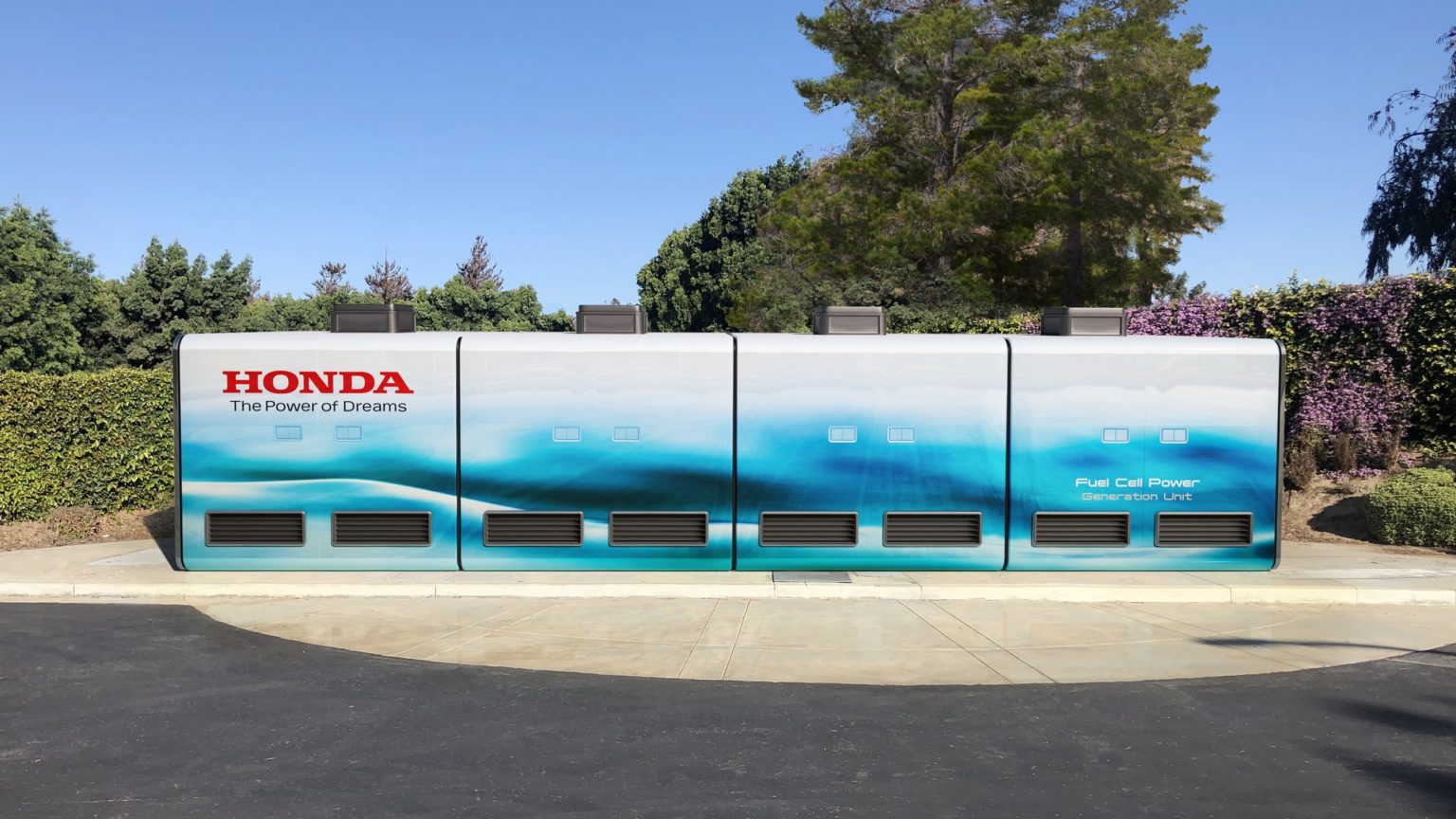Honda will begin testing its zero-emissions fuel cell power station at its corporate campus in Torrance, California in early 2023, the company announced. (Courtesy: Honda)
Honda will begin testing its zero-emissions fuel cell power station at its corporate campus in Torrance, California in early 2023, the company announced.
The fuel cell system is expected to serve as a proof of concept for the backup power generation technology in hopes of reaching future commercialization. Honda said it will use the system to back up a data center.
The power station is designed to use components from the Honda Clarity Fuel Cell vehicles and is expected to be able to generate up to 1152 kW-DC/1 MW-AC from an inverter.
Over the course of the demonstration, Honda said it plans to study the power supply area, as well as supply chain development, grid connection access, construction specifications, AC/DC connection requirements, and other areas.
Fuel cell power stations operating on renewable energy could help replace diesel-powered generators to provide backup power.
Hydrogen produced from renewable energy through electrolysis presents opportunities to decarbonize hard-to-abate sectors like heavy industry and shipping. The limited availability of electrolyzers, however, remains a sizeable barrier to scaling green hydrogen.
In the U.S., $9.5 billion for green hydrogen hubs and electrolysis manufacturing programs was included in the Bipartisan Infrastrastructure Law. The Biden administration has said it hopes to cut the cost of clean hydrogen to $1 per 1 kilogram in one decade. Green hydrogen makes up only 5% of the hydrogen produced in the U.S. with the rest coming from natural gas.
Looking ahead to 2050, the U.S. Department of Energy said it expects the market for green hydrogen to grow to 100 MMT/yr with 1,000 GW of electrolyzer capacity.
DOE determined that government policy is necessary to scale green hydrogen production, even though the U.S. currently has the necessary manufacturing capabilities and materials.
